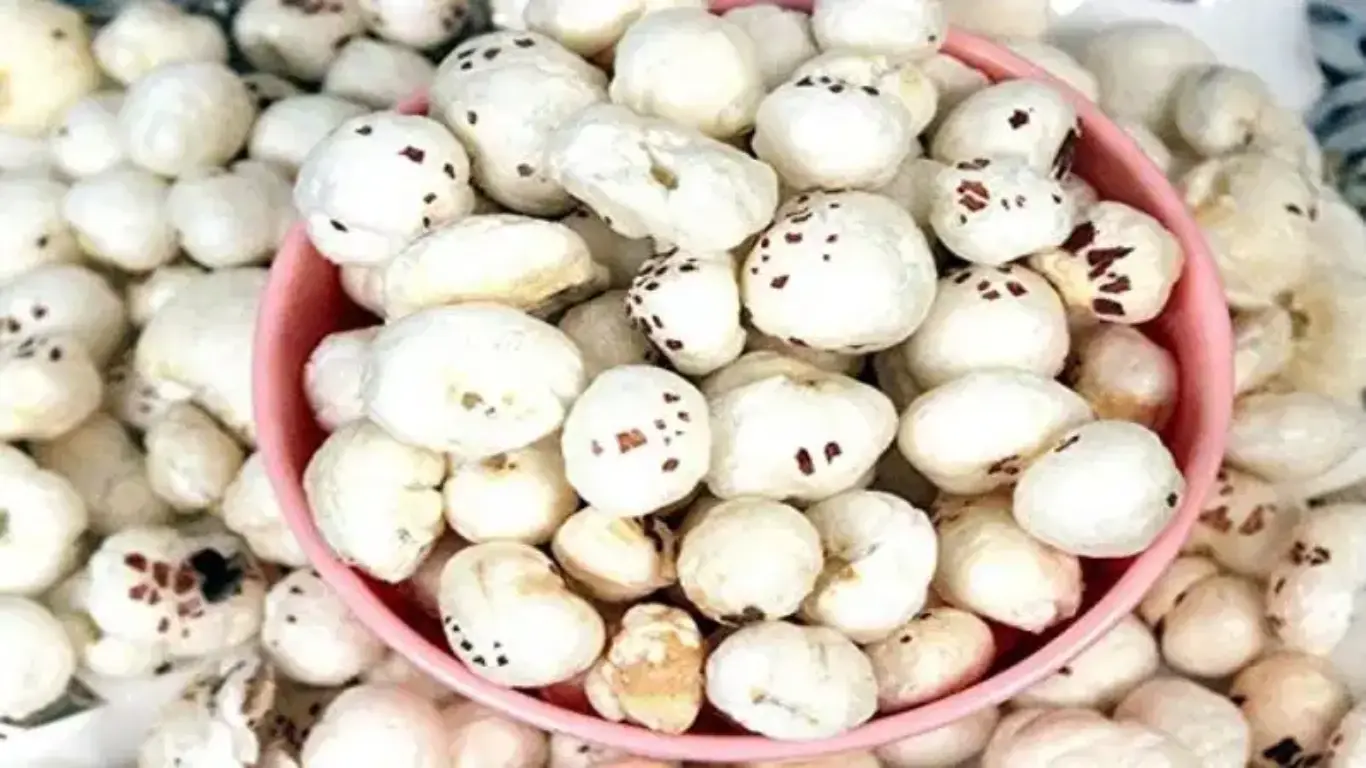Now Makhana Can Be Cultivated in Fields Instead of Ponds: Government Offers 50% Subsidy

0 Views
Updated On:
Makhana cultivation is now possible in fields, with government subsidies of up to 50%, boosting farmer income and accessibility.

Key Highlights
- Makhana can now be cultivated in fields.
- The government offers up to 50% subsidy for field cultivation.
- Training and support provided to farmers.
- Makhana farming is expanding beyond Bihar to other states.
Makhana, also known as fox nuts, is a superfood that is increasingly boosting the income of farmers. Traditionally cultivated in ponds or waterlogged areas, Makhana can now also be grown in regular fields, just similar to paddy cultivation. This shift is expected to make Makhana farming more accessible and profitable for the farmers. To support this, the government is offering up to a 50% subsidy on Makhana cultivation in fields.
Two Main Systems of Makhana Cultivation
There are two primary methods of cultivating Makhana: the Jalkar system and the field system.
- Jalkar System: Makhana is traditionally grown in places where water remains year-round, such as ponds, lakes, or old river beds.
- Field System: In this method, a thick dam is built around the field to retain 6 to 9 inches of water, similar to paddy fields. This system is gaining popularity because it is more beneficial and can be adopted in areas where ponds are not available.
Field System
India is the largest producer of Makhana, with Bihar contributing 80% of the total production. Traditionally, Makhana is cultivated in ponds in Bihar, but now, thanks to modern agriculture or agricultural practices, it can also be cultivated in flat fields.
For successful cultivation, fields need to be filled with 6 to 9 inches of water, which must be maintained continuously. Agricultural scientists have found that cultivating Makhana in fields rather than ponds results in higher yields. To promote this new method, training programs are being organized for farmers. For instance, in Purnia district, experts have been educating farmers on how to adopt field-based Makhana cultivation.
Also Read: Bihar Seed Dealer Appointments: Apply Online by September 17, 2024
Expansion Beyond Bihar
While Bihar has long been the hub of Makhana production, accounting for 80% of the country’s output, Makhana farming is spreading to other states. These include Uttar Pradesh, West Bengal, Assam, Odisha, Jammu & Kashmir, Manipur, and Madhya Pradesh. Uttar Pradesh, in particular, has seen significant growth in Makhana cultivation.

Government Support and Subsidies
The Uttar Pradesh government, under the leadership of Chief Minister Yogi Adityanath, is actively promoting Makhana cultivation. The government plans to provide training to farmers and offer a 50% subsidy on cultivation costs. Initially, Makhana farming will be launched on a large scale in Varanasi, Prime Minister Narendra Modi’s parliamentary constituency.
Twenty-five farmers from eight assembly constituencies in Varanasi have been selected for training at the Makhana Institute in Darbhanga, Bihar. Under the Integrated Horticulture Development Mission (MIDH), the government has set the cost of Makhana cultivation at ₹80,000 per hectare, with 50% of this being subsidized by the Horticulture Department. Similarly, in Bihar, a subsidy of ₹72,000 per hectare is provided, along with low-cost seeds.
Also Read: Paddy Prices Rises to Rs 3692/Quintal: Market Trends & Insights
CMV360 Says
Makhana cultivation is a promising opportunity for farmers to increase their income. With government support and modern farming techniques, Makhana can now be grown in fields, making it more accessible. The introduction of subsidies and training programs further enhances the appeal of this superfood as a profitable crop.
